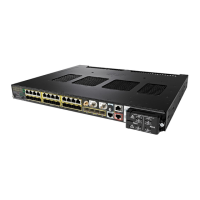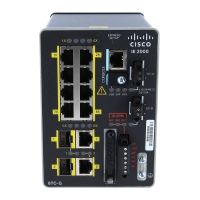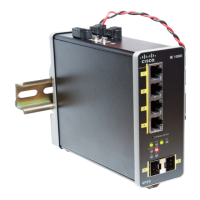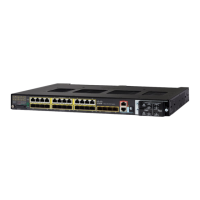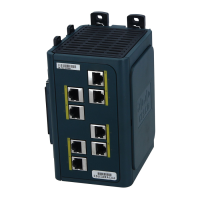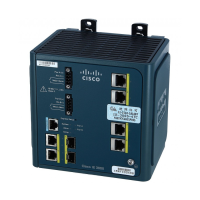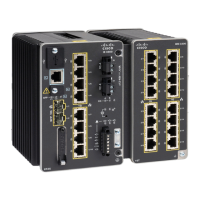590
Configuring QoS
QoS Treatment for Performance-Monitoring Protocols
Figure 81 Marking of Classified Traffic
This example uses a policy map to remark a packet. The first marking (the set command) applies to the QoS default class
map that matches all traffic not matched by class AF31-AF33 and sets all traffic to an IP DSCP value of 1. The second
marking sets the traffic in classes AF31 to AF33 to an IP DSCP of 3.
Switch(config)# policy-map Example
Switch(config-pmap)# class class-default
Switch(config-pmap-c)# set ip dscp 1
Switch(config-pmap-c)# exit
Switch(config-pmap)# class AF31-AF33
Switch(config-pmap-c)# set ip dscp 3
Switch(config-pmap-c)# exit
Switch(config-pmap)# exit
Switch(config)# interface fastethernet0/1
Switch(config-if)# service-policy input Example
Switch(config-if)# exit
QoS Treatment for Performance-Monitoring Protocols
Two-Way Active Measurement Protocol, page 590
QoS Treatment for IP-SLA and TWAMP Probes, page 590
QoS Marking for CPU-Generated Traffic, page 591
QoS Queuing for CPU-Generated Traffic, page 592
Configuration Guidelines, page 592
Two-Way Active Measurement Protocol
For information about the Two-Way Active Measurement Protocol (TWAMP), see Understanding TWAMP, page 41-14
and Configuring TWAMP, page 41-15.
QoS Treatment for IP-SLA and TWAMP Probes
The QoS treatment for IP-SLA and TWAMP probes must exactly reflect the effects that occur to the normal data traffic
crossing the device.
The generating device should not change the probe markings. It should queue these probes based on the configured
queueing policies for normal traffic.
Marking
By default, the class of service (CoS) marking of CFM traffic (including IP SLAs using CFM probes) is not changed. This
feature cannot change this behavior.
By default, IP traffic marking (including IP SLA and TWAMP probes) is not changed. This feature can change this behavior.
157193
Receive
Classify
Queuing,
scheduling,
and shaping
Unconditionally
mark traffic for
reclassification

